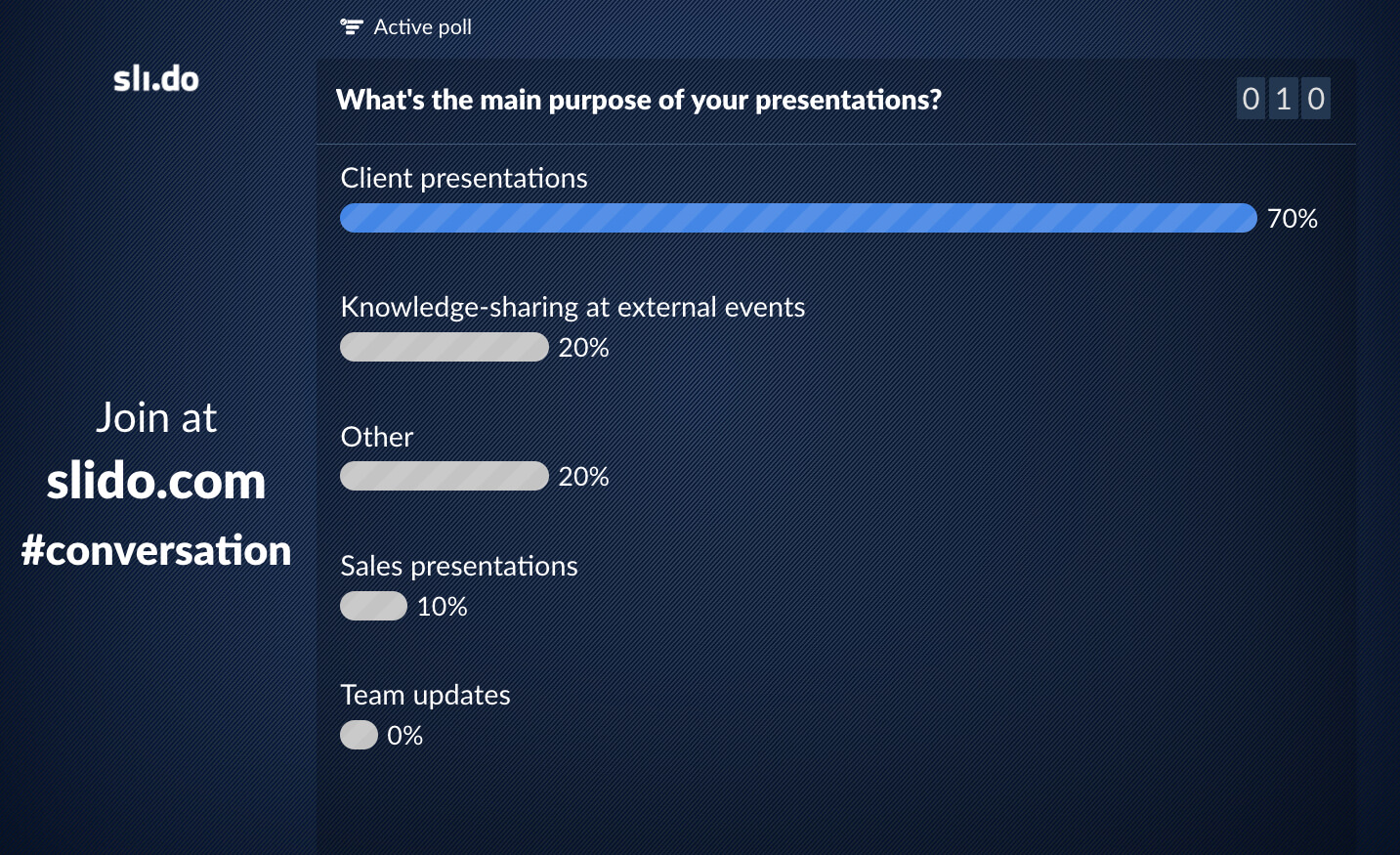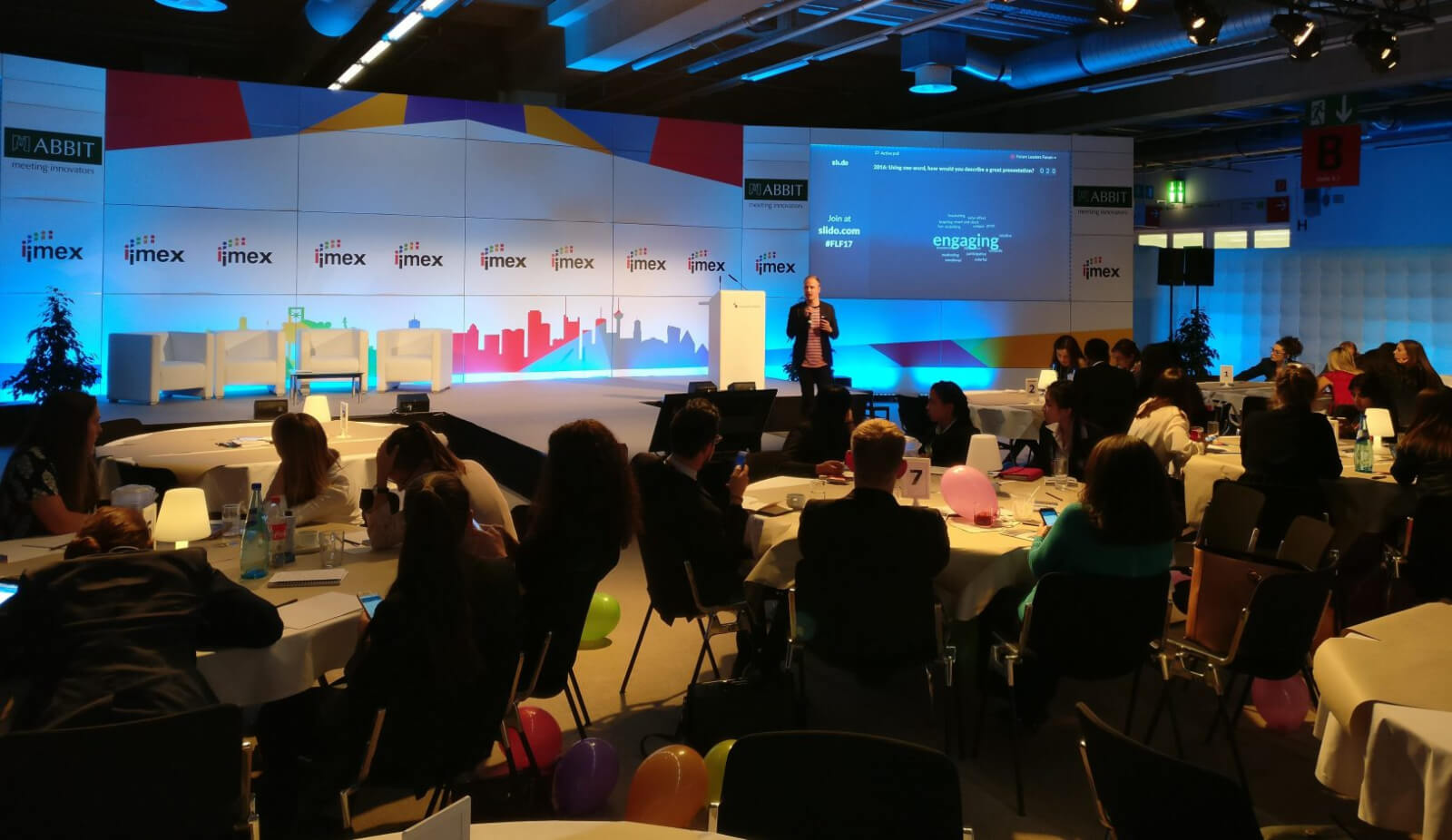Recently, I got an invitation to deliver a presentation at IMEX in Frankfurt. I’ve been using polls as part of my presentations and webinars for a while. But I have never built an entire presentation around them.
It was time to take a leap of faith.
So instead of using a presentation deck, I replaced all my slides with live polls. It was an exciting experience to get the audience to help me co-create my talk in real time.
Fear not. You don’t need to be this radical to achieve some great results. Often, a few well-placed polls in between the slides have the same, if not even stronger, effect.
Below, I share some of the lessons that I learned the hard way and some that I picked up from some brilliant facilitators (thanks so much!).
Better understand your audience
One of the main challenges that we as presenters face is a lack of information about our audience. Rarely do we know exactly whom we’re talking with, and what their experience and background are. We just build our story based on the little information that we have, close our eyes and hope to hit the mark.
But this bothers me. As a speaker, I want to deliver a relevant and customized talk.
To understand my audience, I usually run a series of polls after a short presentation intro. As a result, I gain a clearer picture of my audience and then adjust my narrative accordingly.
For instance, at my last webinar on conversational presenting, I simply asked: “What’s the main purpose of your presentation?” Discovering that most people present for clients allowed me to focus on how to optimize business presentations instead of giving tips for traditional lectures.

You might wonder if it’s not too late to do it onstage. It isn’t. On the contrary, these insights will allow you to fine-tune your narration as well as adjust the content based on the audience’s experience and background.
Engage people and get them to talk
In 2017, it’s hard to call a presentation successful if we fail to engage people. In theory, an “engagement equation” is simple. You need to get your participants to act, reflect or discuss. But the real key is to create meaningful engagement that entices participants to process and absorb what they have heard.
Live polls can be a powerful enabler here. But make no mistake. Collecting votes is not enough. It’s just the first step to a meaningful engagement. What really counts is the discussion that precedes or follows.
There are two ways you can use polls to simulate learning.
A) Run a poll and then start a discussion. At IMEX America, Padraic Gilligan used polls with questions such as, Have you booked a non-hotel sharing economy style venue for a meeting over the last six months? (87% No), to check the pulse of the room and then he got people sitting in groups of 5-7 to discuss the results.
B) Start with a discussion and then poll the audience. At Conventa Crossover, Jan-Jaap In der Maur got people in small groups to brainstorm what the workplace of the future will look like. Then he prompted participants to submit their ideas via an open poll.
Check the audience’s understanding
Most presentations lack any kind of feedback loop. We start throwing information and hope that some of it “sticks” with people. We disregard their prior knowledge and rarely ever assess what stuck.
At our last internal training, I turned my slides into the poll quiz to gauge the level of understanding about How to roll out Slido at a large event. By getting people to commit to the answer, I raised their curiosity and opened up the knowledge gaps that they were eager to fill.

Once I collected the results, I revealed the correct answer and provided further explanation. From the speaker’s perspective, I was able to continuously measure the understanding and elaborate on the areas that were unclear.
Finally, the results were effective in getting people to share their own experiences when coping with clients and challenge the points I was talking about.
Wrap up
Expectations changed. Event attendees and meeting participants look for inclusion, engagement, and empowerment. If used well, live polls will allow you to make all your participants part of your story. Keep in mind that launching a poll is not enough. You need to take it a step further and use the results to deliver more targeted content or trigger meaningful conversations. Your audience will love it.
To get some practical ideas for your sessions, check out these 15+ Poll Examples to Open Your Presentations.




